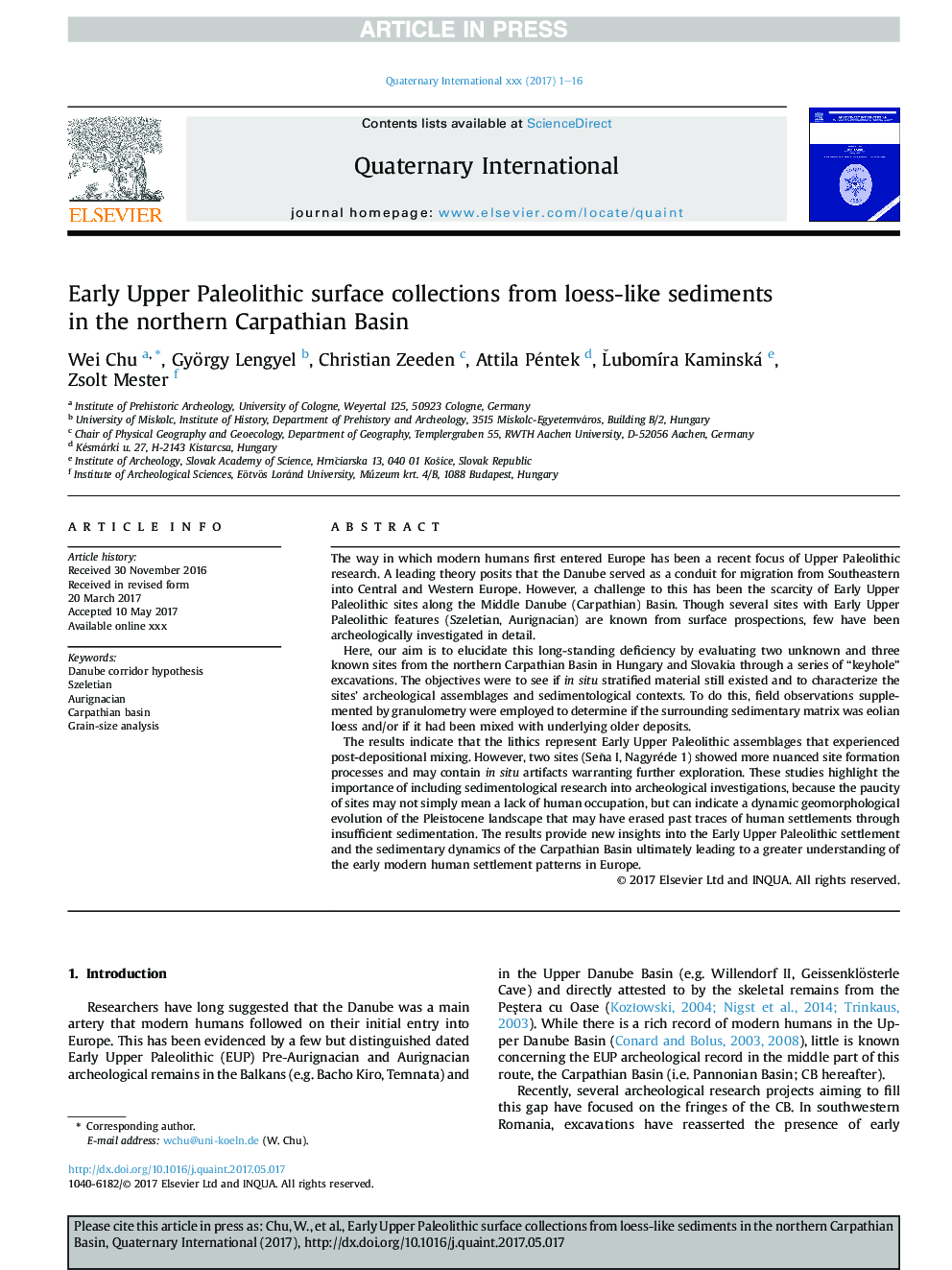| Article ID | Journal | Published Year | Pages | File Type |
|---|---|---|---|---|
| 7449086 | Quaternary International | 2018 | 16 Pages |
Abstract
The results indicate that the lithics represent Early Upper Paleolithic assemblages that experienced post-depositional mixing. However, two sites (SeÅa I, Nagyréde 1) showed more nuanced site formation processes and may contain in situ artifacts warranting further exploration. These studies highlight the importance of including sedimentological research into archeological investigations, because the paucity of sites may not simply mean a lack of human occupation, but can indicate a dynamic geomorphological evolution of the Pleistocene landscape that may have erased past traces of human settlements through insufficient sedimentation. The results provide new insights into the Early Upper Paleolithic settlement and the sedimentary dynamics of the Carpathian Basin ultimately leading to a greater understanding of the early modern human settlement patterns in Europe.
Related Topics
Physical Sciences and Engineering
Earth and Planetary Sciences
Geology
Authors
Wei Chu, György Lengyel, Christian Zeeden, Attila Péntek, ĽubomÃra Kaminská, Zsolt Mester,
